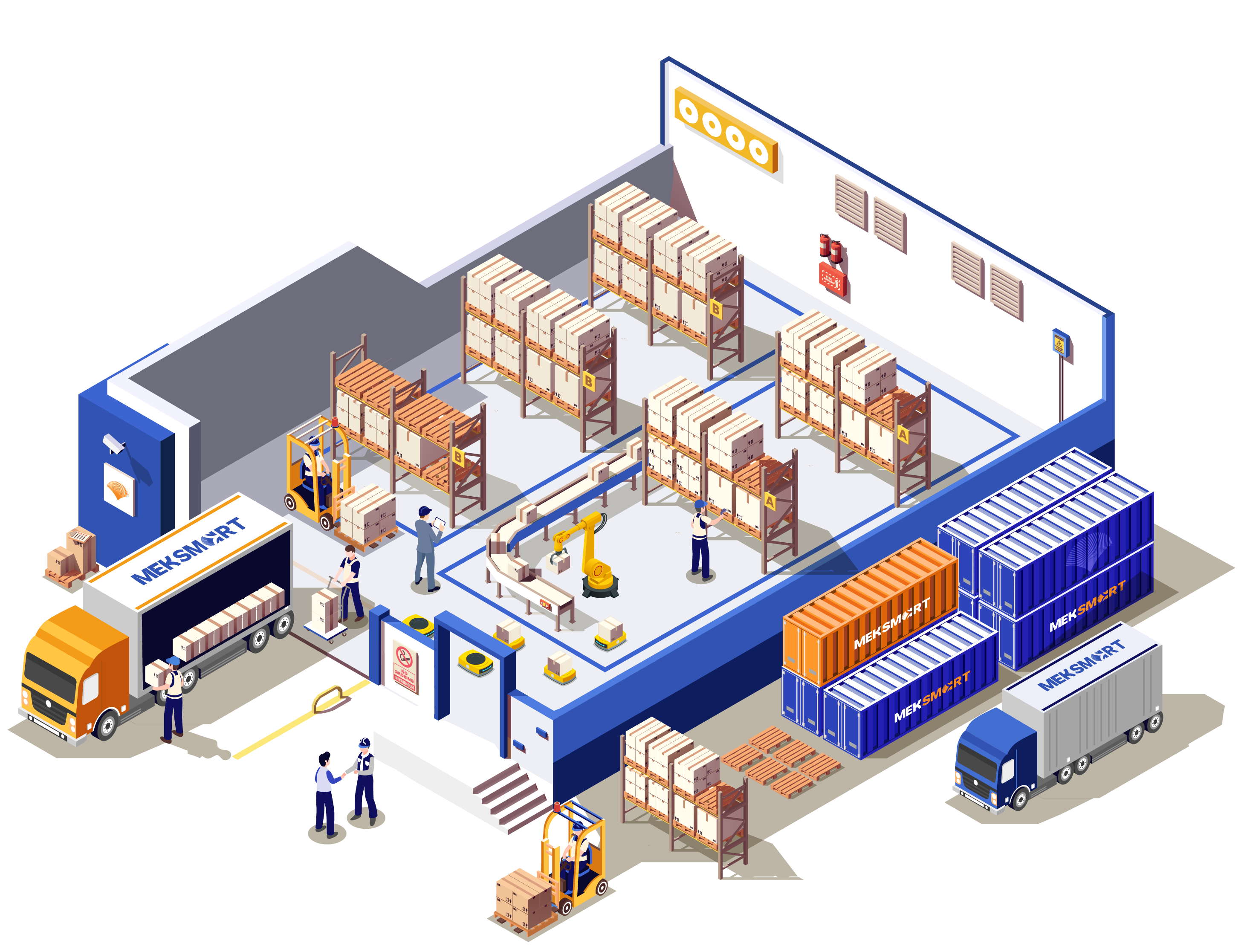MEKSMART
GENERAL NEWS
Author: TIÊN HUỲNH
Update: 24/11/2022
COMMON TYPES OF WAREHOUSE MANAGEMENT SYSTEMS
There are four key types of warehouse management systems (WMS) that can help make 3PLs and other logistics-related businesses run operations in a smoother way. They include standalone, supply chain modules, cloud-based, and ERP-integrated WMS.
The features and functions of these WMS types are mostly the same, but the delivery and package methods are different. For a better understanding, let's dive into the following content.
Primary Advantages of Warehouse Management Systems
The variety of warehouse management software provides numerous advantages, such as lower overall operating costs. Businesses can use WMS software to control logistics and inventory by performing cycle counts, tracking shipments, and monitoring expiration dates.
Utilizing RFID tagging, barcoding, and serial numbers, these tools improve inventory visibility. On top of that WMS can optimize inventory transportation both internally and externally with inventory tracking functionality.
There are also tools to help you optimize your putaway, receiving picking, packing, shipping, and slotting responsibilities.

Common Types Of Warehouse Management Systems
There are four kinds of warehouse management systems: standalone, ERP-integrated WMS, cloud-based WMS, and supply chain modules.
1. Standalone
Most companies register standalone systems for warehouse management features. Providers integrate these warehouse systems with current and future solutions to sell them as specialized items with no other supply chain functions.
Some providers provide a host of conventional transportation management systems, but the main focus is on the best-of-breed warehouse management system. These systems refer to selective breeding, including the best most critical features of potential WMS modules.
For warehouse management systems, this includes warehouse operations and inventory management. Users of a standalone type of WMS need to expect expiration date tracking, cycle counting, put-aways, barcode scanning, picking, shipping, packing and receiving.
2. Supply chain modules
Supply chain management software provides a broad scope, helping manage everything from provider relationships to organization processes to risk assessment. It is mainly about automated inventory management, product cycles, and material sourcing.
3. Cloud-based
On-premise systems regularly are not reliable regarding installation and maintenance costs. You probably end up spending a large amount to handle infrastructure and installation.
Using cloud-based warehouse management systems sports various huge advantages. As they are hosted and maintained by a vendor, you can cut installation and implementation costs.
4. ERP-integrated WMS
ERPs are powerful systems that can work with various other software. They provide many key apps that can streamline the processes of 3PLs from human resources, customer relationship management, accounting, procurement, and supply chain planning.
ERP appears to be a good choice for organizations that are seeking software upgrades on larger scales. Combining ERPs with a WMS can cost businesses double the price because of unique modules.
But this system can perform many operating activities and centralize them into a one-stop interface.
Wrapping Up
Above is some essential information about types of warehouse management systems. Briefly, there are four types of WMS, including standalone, supply chain modules, cloud-based, and ERP-integrated WMS.
Based on your business nature and scale, you could choose a suitable option to gain the best outcome.







